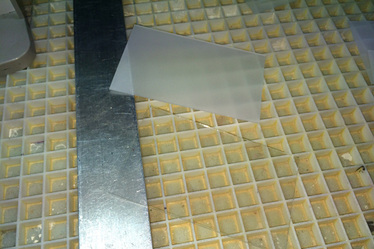
|
I sandblast on my glass screens, sculptures, buttons and jewelry. But for the last couple of days I've been working on my commercial glass work.  I cut and sandblast 2.51" x 4.04" pieces of micro thin glass. The glass pieces fit into a case that attaches to a microscope to diffuses the light. I like to think that on a very, very small scale I'm participating in the studies at universities and research in laboratories around the planet. I send the plates off with a blessing. Yesterday I cut around 340 pieces and inspected them for proper size. Today I started sandblasting. Each side of the glass is coated with a very fine grit - 220 aluminum oxide. For safety I use a great ventilating system and wear ear protection and an appropriate mask. I have sandblasted and inspected about half the glass pieces. Tomorrow I'll finish sandblasting. Then it's cleaning the plates and packaging them for my current and future orders. Okay, it's not quite as much fun as creating glass and textile art pieces. However, I've been making various microscope glass parts for over two decades. It's good work and it pays bills! Yes!
1 Comment
Textile paints are screen printed on fabric, embellished with pastels, charcoal, crayon and sealed to prevent the "fugitive" media from smudging. This a a great technique for creating wall pieces. Susie is a knowledgeable and gentle teacher. Information on her many surface design classes are found on her website, susiekrage.com Susie's Panel Susie Krage Teaching and Demonstrating The best part of a workshop is the conversation and inspiration from the instructor and fellow artist! Sandy O'Brien, a marvelous quilter, shows her finished piece that begins with a four triangle screen print. Her use of pastels creates illuminating colors. Sandy sells her work in a variety of galeries, at the Ann Arbor Fiberarts Guild Sales, and outdoor summer shows. Jeanne Sarna begins her design with a leaf screen print. Jeanne's embellishments took her piece "outside the box"! I'd hang this piece in my house in a heartbeat. Jeanne is an established textile artist and jewelry designer. She has a workshop, “Fiber Jewelry: The FUNdamentals”, coming up January 24, 2015 with the Ann Arbor Fiberarts Guild. See details at www.annarborfiberartsguild.com Kathy Zasuwa and Susie are applying base extender to preserve the design. Kathy commented that she enjoys putting surprise and detail into her work. Kathy is a skilled weaver and textile artist. She speaks to groups on the process of creativity. Jennifer Gould silk screens and embellishes a long panel of highly decorated leaves. Leaves are often a part of her design expression. An experienced textile artist and doll maker, Jennifer's work can be found on jennifergould.com. My piece: Screen printed rectangles in green and blue textile paint - Second layer coloring with pastels -Third Layer texturing with pastels, charcoal and crayon - Fourth layer "writing" with a gel roller. I had a great time exploring this technique and I look forward to "playing" with my fiber, paint, and pastels in a future project. It's always fun to learn a new technique with a great instructor and good friends.
I just finished a two-day session of discharging color on several yards of fabric. I had in mind a three-day session, but alas a hornet sting I received while working outside applying the bleach mixture ended my session abruptly. The rest of the fabric will have to wait for another group of sunny days. When applying a 50% bleach/ 50% water solution I work outside guaranteeing good ventilation. I also wear a good ventilating mask. It's just too hard on the lungs to spray or paint bleach for several minutes, let alone hours without protection. FIRST PROJECT / FIRST DAY I prepared a 100% black cotton fabric, 90" x 3 yards, by ironing it and then folding the fabric accordion style and ironing in the folds. It's a little tricky with so much fabric. Outside as I paint the edges of the black fabric, the color changes almost instantly. The longer the bleach sits on the fabric the lighter the color becomes. As I add more bleach solution, the colors begin to mingle with each other creating various shades of orange, orange/yellow and yellow/cream. I begin to open the folds, painting and dripping the bleach solution directly on the fabric. As I open the folds of the fabric, I continue to paint and drip the bleach solution. I wash my fabric in the washing machine to remove the last of the bleach. The process softens the colors, though the fabric is a brighter orange than these photos show. I create this type of fabric in the spring, summer and fall, but often wait until cold and rainy weather to sew the fabric into garments.
Discharging by spraying over lace, kitchen gadgets, keys, stencils and variety of found object...to be discussed in my next blog. |
Categories
All
AuthorI am Terrie Voigt, and I'm a textile and glass artist. I create art in both mediums and at times combine textiles with glass to create multi-media pieces or wearable art with glass closures. |

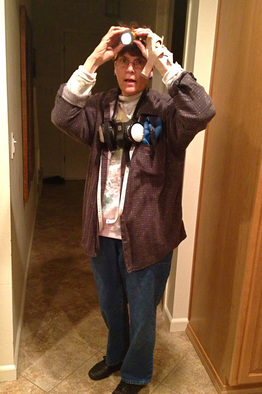
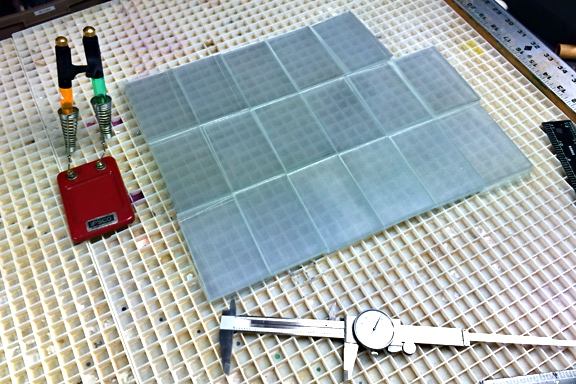
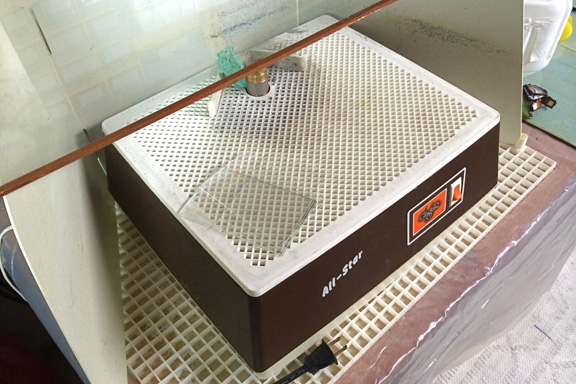
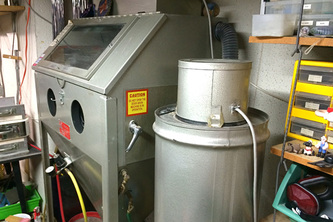
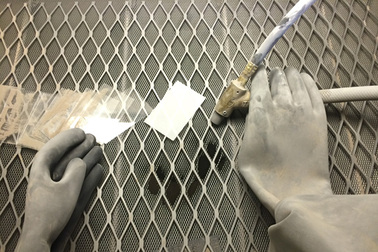
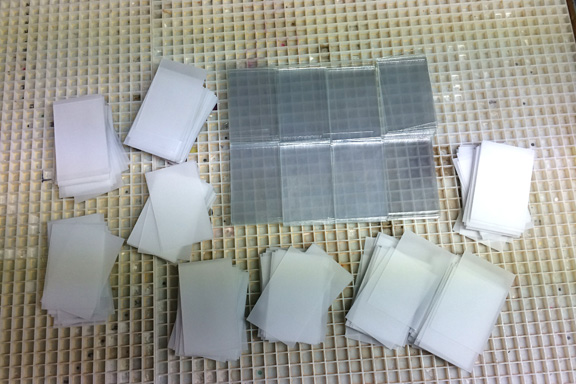
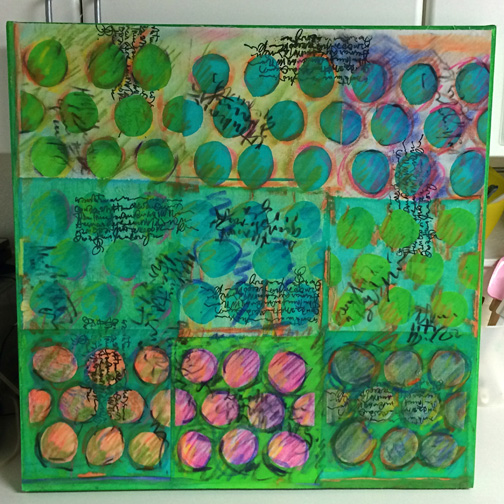
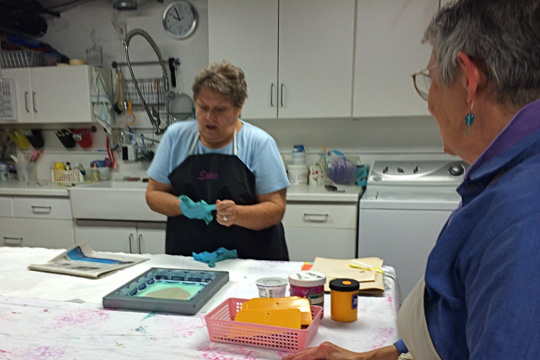
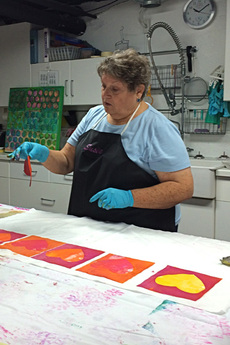
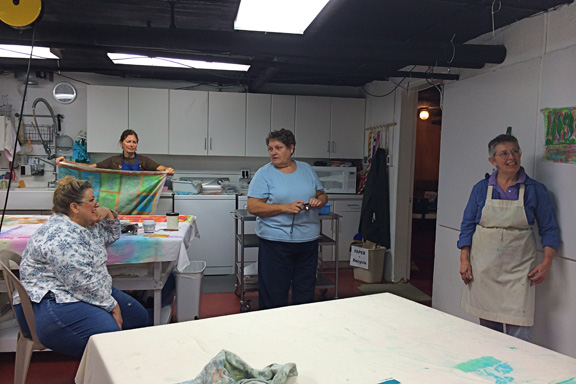
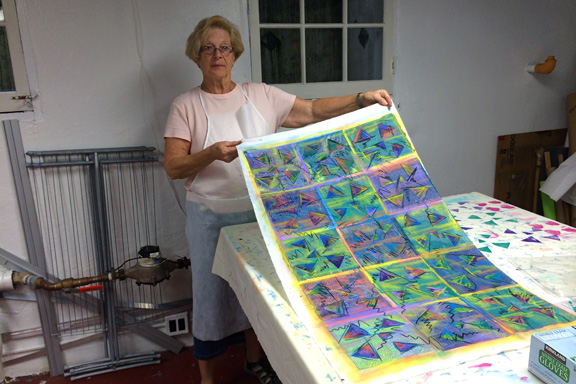
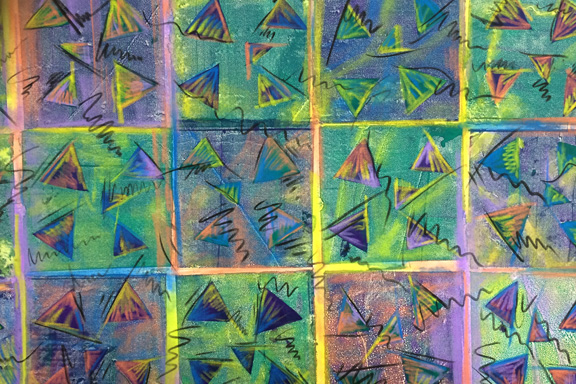
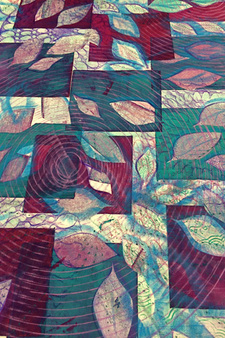
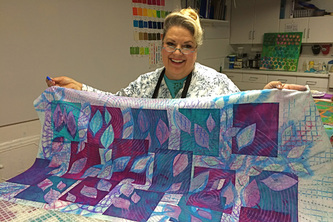
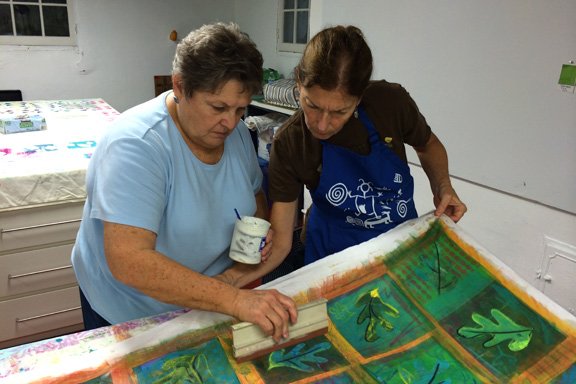
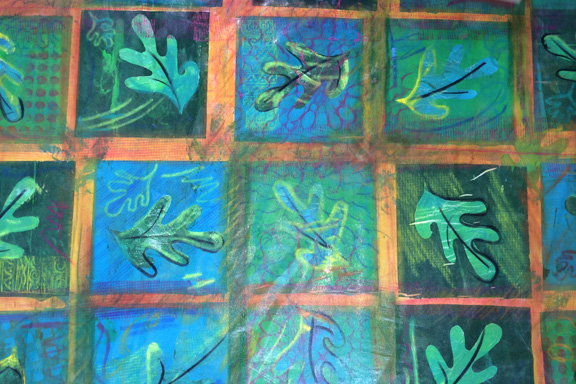
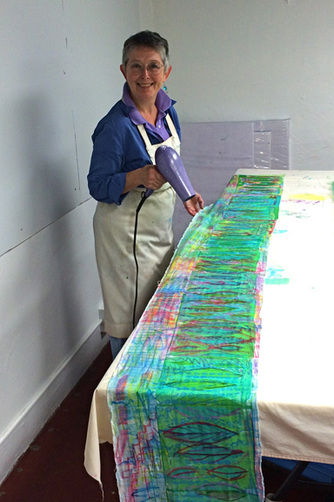
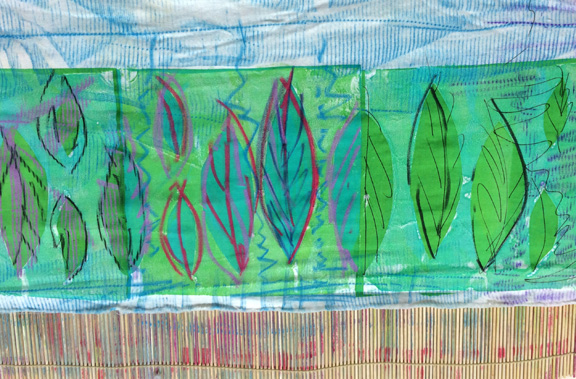
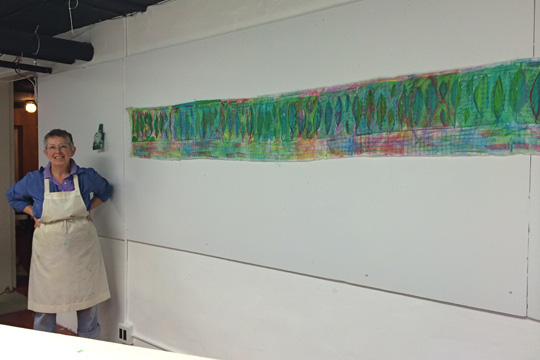
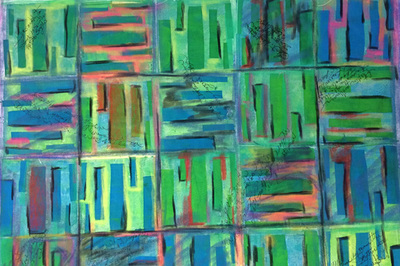
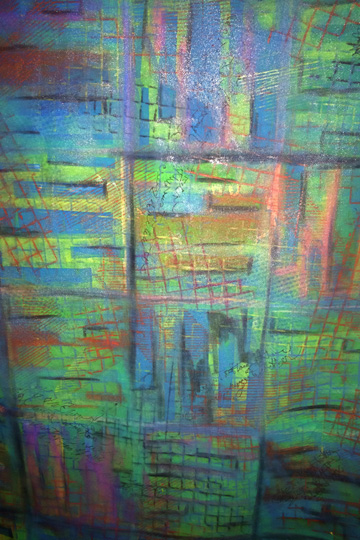
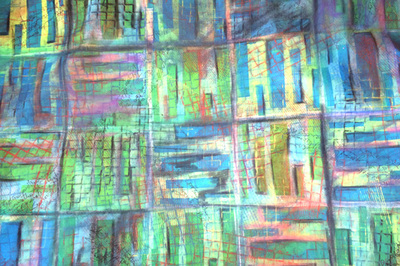
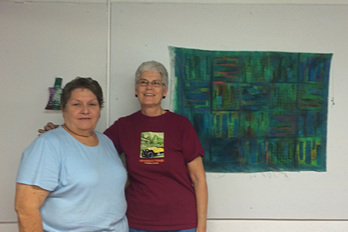
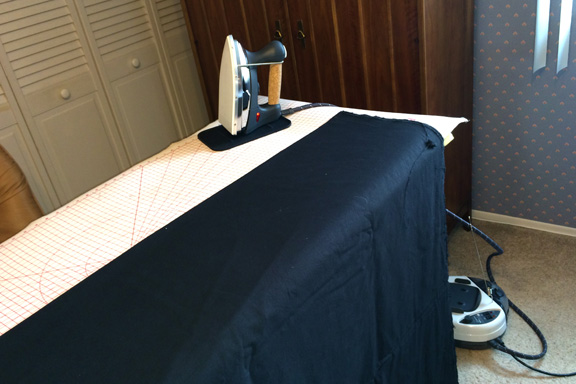
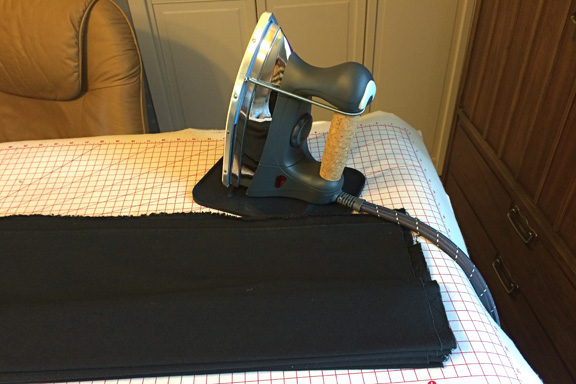
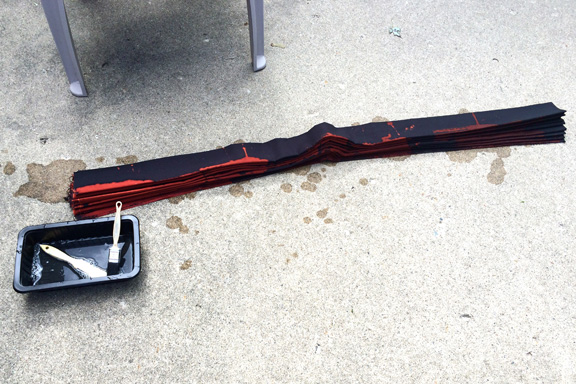
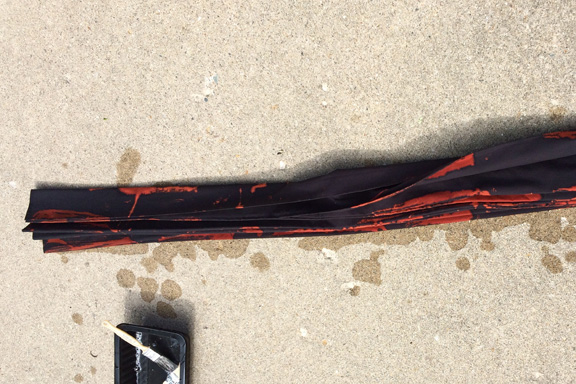
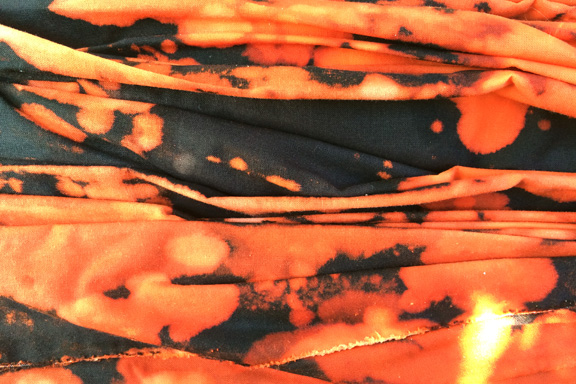
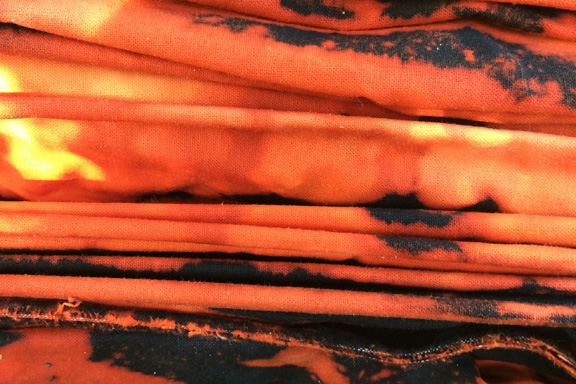
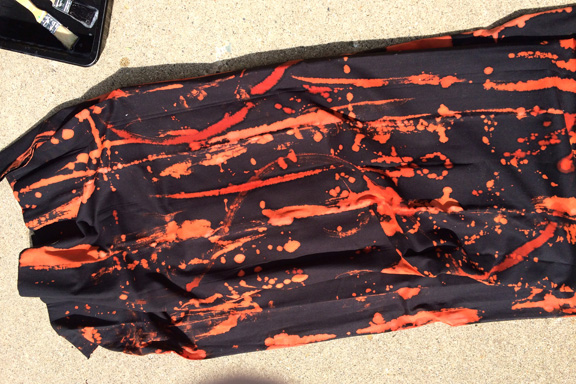
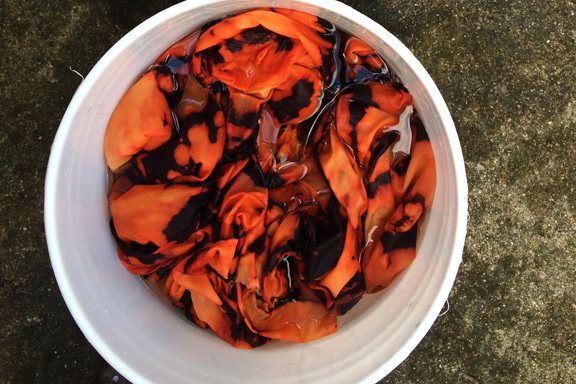
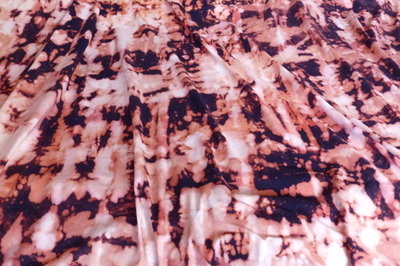
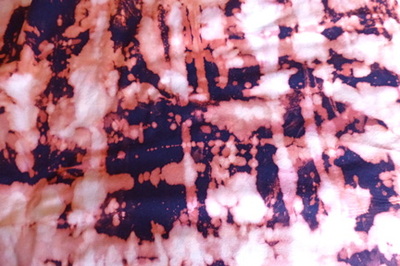
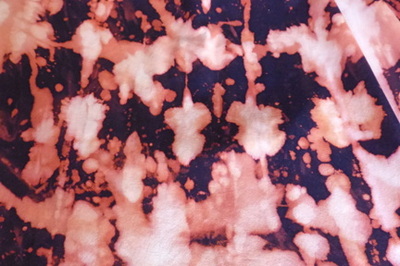
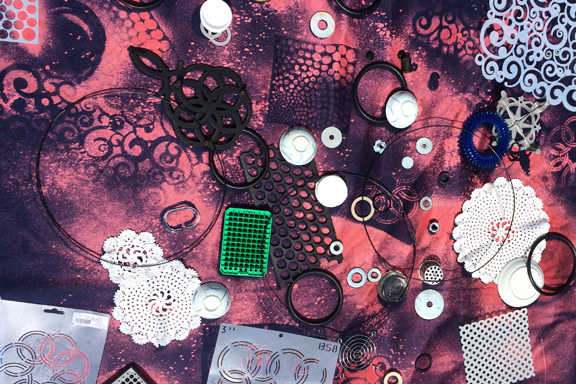
 RSS Feed
RSS Feed